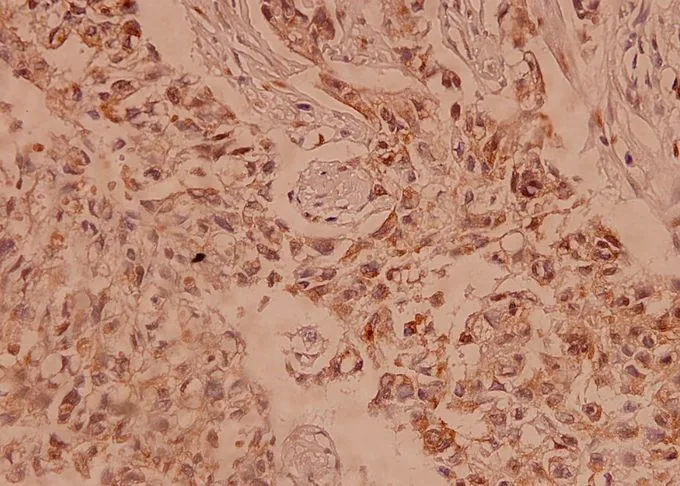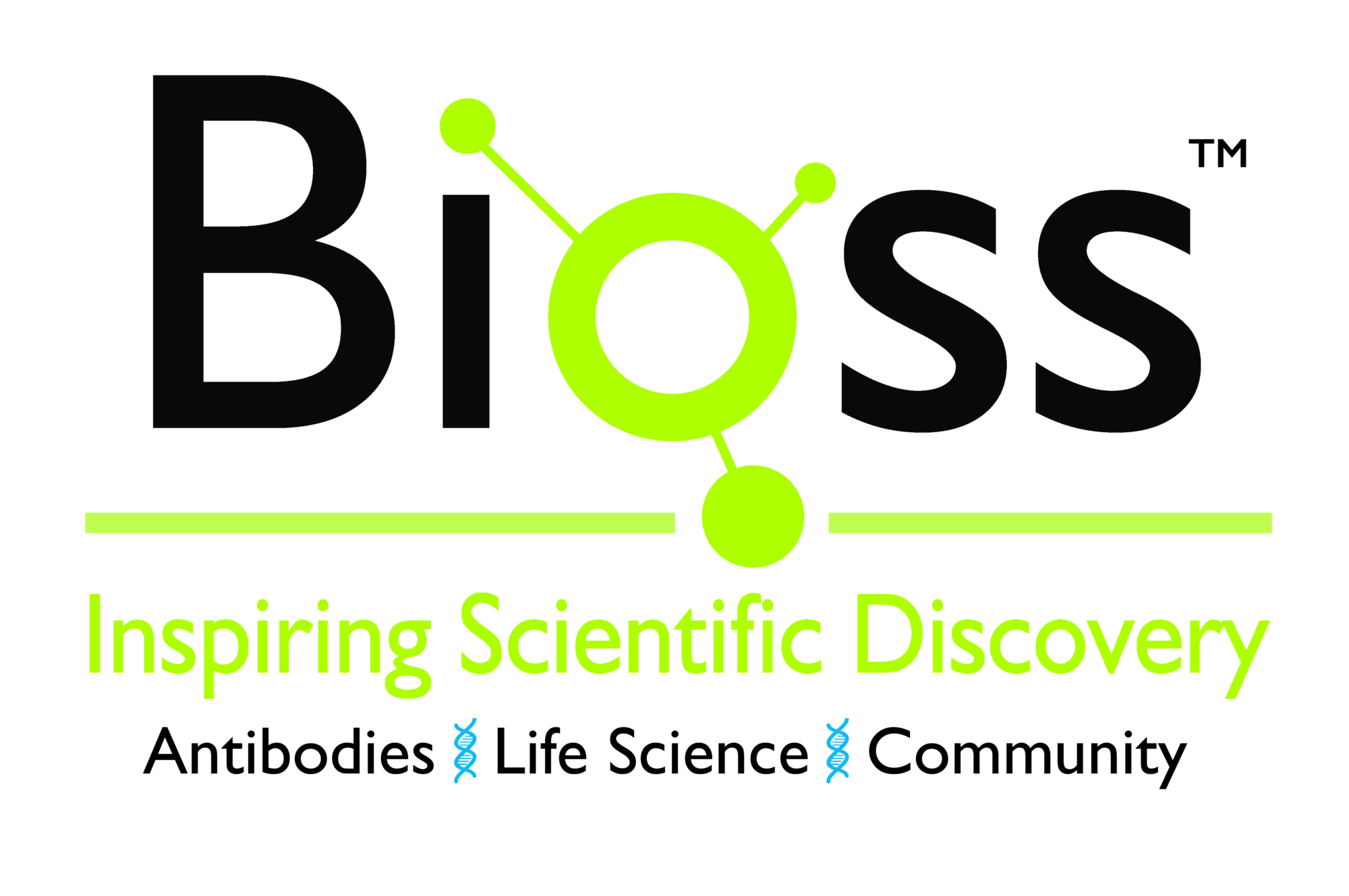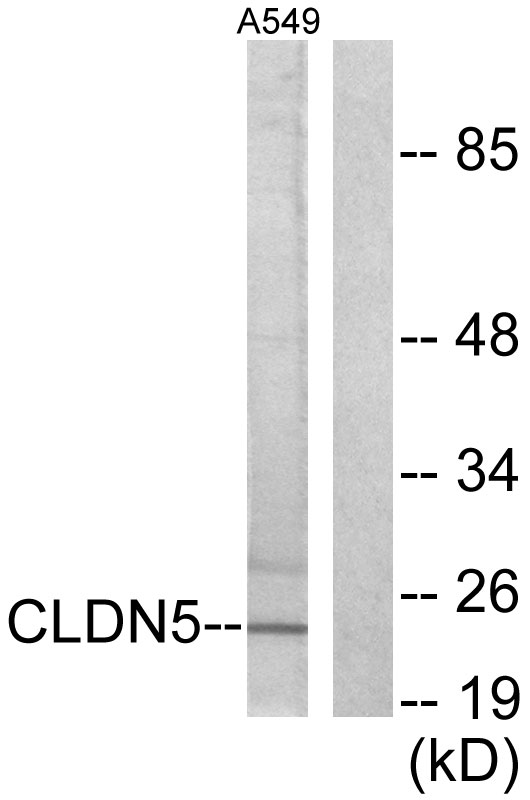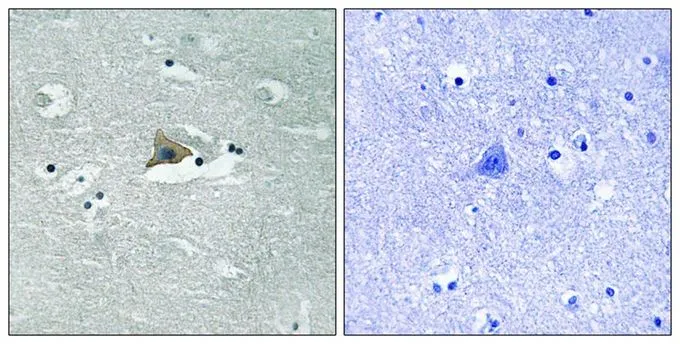
Immunohistochemistry (IHC) analyzes of Claudin-5 pAb in paraffin-embedded human breast carcinoma tissue at 1:100.
Claudin 5 antibody
GTX49370
ApplicationsWestern Blot, ImmunoHistoChemistry, ImmunoHistoChemistry Paraffin
Product group Antibodies
ReactivityHuman, Monkey, Mouse, Rat
TargetCLDN5
Overview
- SupplierGeneTex
- Product NameClaudin 5 antibody
- Delivery Days Customer9
- Application Supplier NoteWB: 1:500-1:1000, IHC: 1:50-1:200, ICC/IF: 1:50-1:200
- ApplicationsWestern Blot, ImmunoHistoChemistry, ImmunoHistoChemistry Paraffin
- CertificationResearch Use Only
- ClonalityPolyclonal
- Concentration1 mg/ml
- ConjugateUnconjugated
- Gene ID7122
- Target nameCLDN5
- Target descriptionclaudin 5
- Target synonymsAWAL, BEC1, CPETRL1, TMDVCF, TMVCF, claudin-5, transmembrane protein deleted in VCFS, transmembrane protein deleted in velocardiofacial syndrome
- HostRabbit
- IsotypeIgG
- Protein IDO00501
- Protein NameClaudin-5
- Scientific DescriptionThis gene encodes a member of the claudin family. Claudins are integral membrane proteins and components of tight junction strands. Tight junction strands serve as a physical barrier to prevent solutes and water from passing freely through the paracellular space between epithelial or endothelial cell sheets. Mutations in this gene have been found in patients with velocardiofacial syndrome. Alternative splicing results in multiple transcript variants encoding distinct isoforms. [provided by RefSeq, May 2018]
- ReactivityHuman, Monkey, Mouse, Rat
- Storage Instruction-20°C or -80°C,2°C to 8°C
- UNSPSC12352203
References
- Shen S, Wang J, Zhao Q, et al. The protective effects of butorphanol tartrate against homocysteine-induced blood-brain barrier dysfunction. Bioengineered. 2022,13(3):7209-7220. doi: 10.1080/21655979.2022.2037953Read this paper
- Watanabe D, Nakagawa S, Morofuji Y, et al. Characterization of a Primate Blood-Brain Barrier Co-Culture Model Prepared from Primary Brain Endothelial Cells, Pericytes and Astrocytes. Pharmaceutics. 2021,13(9). doi: 10.3390/pharmaceutics13091484Read this paper
- Wang M, Guo J, Zhao YQ, et al. IL-21 mediates microRNA-423-5p /claudin-5 signal pathway and intestinal barrier function in inflammatory bowel disease. Aging (Albany NY). 2020,12(16):16099-16110. doi: 10.18632/aging.103566Read this paper
- Chen P, Tang H, Zhang Q, et al. Basic Fibroblast Growth Factor (bFGF) Protects the Blood-Brain Barrier by Binding of FGFR1 and Activating the ERK Signaling Pathway After Intra-Abdominal Hypertension and Traumatic Brain Injury. Med Sci Monit. 2020,26:e922009. doi: 10.12659/MSM.922009Read this paper
- Chen P, Zhang H, Zhang Q, et al. Basic Fibroblast Growth Factor Reduces Permeability and Apoptosis of Human Brain Microvascular Endothelial Cells in Response to Oxygen and Glucose Deprivation Followed by Reoxygenation via the Fibroblast Growth Factor Receptor 1 (FGFR1)/ERK Pathway. Med Sci Monit. 2019,25:7191-7201. doi: 10.12659/MSM.918626Read this paper





![ICC/IF analysis of COS7 cells transiently transfected with Claudin 5 plasmid using GTX84681 Claudin 5 antibody [1G4].](https://www.genetex.com/upload/website/prouct_img/normal/GTX84681/GTX84681_1185_ICCIF_w_23061420_492.webp)
